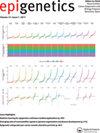Exploring fatty acids from royal jelly as a source of histone deacetylase inhibitors: from the hive to applications in human well-being and health.
IF 3.2
3区 生物学
Q3 BIOCHEMISTRY & MOLECULAR BIOLOGY
引用次数: 0
Abstract
A differential diet with royal jelly (RJ) during early larval development in honeybees shapes the phenotype, which is probably mediated by epigenetic regulation of gene expression. Evidence indicates that small molecules in RJ can modulate gene expression in mammalian cells, such as the fatty acid 10-hydroxy-2-decenoic acid (10-HDA), previously associated with the inhibition of histone deacetylase enzymes (HDACs). Therefore, we combined computational (molecular docking simulations) and experimental approaches for the screening of potential HDAC inhibitors (HDACi) among 32 RJ-derived fatty acids. Biochemical assays and gene expression analyses (Reverse Transcriptase - quantitative Polymerase Chain Reaction) were performed to evaluate the functional effects of the major RJ fatty acids, 10-HDA and 10-HDAA (10-hydroxy-decanoic acid), in two human cancer cell lines (HCT116 and MDA-MB-231). The molecular docking simulations indicate that these fatty acids might interact with class I HDACs, specifically with the catalytic domain of human HDAC2, likewise well-known HDAC inhibitors (HDACi) such as SAHA (suberoylanilide hydroxamic acid) and TSA (Trichostatin A). In addition, the combined treatment with 10-HDA and 10-HDAA inhibits the activity of human nuclear HDACs and leads to a slight increase in the expression of HDAC-coding genes in cancer cells. Our findings indicate that royal jelly fatty acids collectively contribute to HDAC inhibition and that 10-HDA and 10-HDAA are weak HDACi that facilitate the acetylation of lysine residues of chromatin, triggering an increase in gene expression levels in cancer cells.探索从蜂王浆中提取脂肪酸作为组蛋白去乙酰化酶抑制剂的来源:从蜂巢到在人类福祉和健康中的应用。
在蜜蜂幼虫早期发育过程中,不同的蜂王浆(RJ)饮食会形成不同的表型,这可能是由基因表达的表观遗传调控介导的。有证据表明,蜂王浆中的小分子物质可以调节哺乳动物细胞中的基因表达,例如脂肪酸 10-羟基-2-癸烯酸(10-HDA),以前曾与组蛋白去乙酰化酶(HDAC)的抑制作用有关。因此,我们结合计算(分子对接模拟)和实验方法,在 32 种 RJ 衍生脂肪酸中筛选出潜在的 HDAC 抑制剂(HDACi)。我们进行了生化测定和基因表达分析(逆转录酶-定量聚合酶链反应),以评估主要的 RJ 脂肪酸 10-HDA 和 10-HDAA(10-羟基癸酸)在两种人类癌细胞系(HCT116 和 MDA-MB-231)中的功能效应。分子对接模拟结果表明,这些脂肪酸可能与第一类 HDACs(特别是人类 HDAC2 的催化结构域)相互作用,同样也与著名的 HDAC 抑制剂(HDACi)如 SAHA(suberoylanilide hydroxamic acid)和 TSA(Trichostatin A)相互作用。此外,10-HDA和10-HDAA联合处理可抑制人类核HDAC的活性,并导致癌细胞中HDAC编码基因的表达略有增加。我们的研究结果表明,蜂王浆脂肪酸共同促成了HDAC抑制作用,而10-HDA和10-HDAA是弱HDACi,可促进染色质赖氨酸残基的乙酰化,引发癌细胞中基因表达水平的升高。
本文章由计算机程序翻译,如有差异,请以英文原文为准。
求助全文
约1分钟内获得全文
求助全文
来源期刊

Epigenetics
生物-生化与分子生物学
CiteScore
6.80
自引率
2.70%
发文量
82
审稿时长
3-8 weeks
期刊介绍:
Epigenetics publishes peer-reviewed original research and review articles that provide an unprecedented forum where epigenetic mechanisms and their role in diverse biological processes can be revealed, shared, and discussed.
Epigenetics research studies heritable changes in gene expression caused by mechanisms others than the modification of the DNA sequence. Epigenetics therefore plays critical roles in a variety of biological systems, diseases, and disciplines. Topics of interest include (but are not limited to):
DNA methylation
Nucleosome positioning and modification
Gene silencing
Imprinting
Nuclear reprogramming
Chromatin remodeling
Non-coding RNA
Non-histone chromosomal elements
Dosage compensation
Nuclear organization
Epigenetic therapy and diagnostics
Nutrition and environmental epigenetics
Cancer epigenetics
Neuroepigenetics
 求助内容:
求助内容: 应助结果提醒方式:
应助结果提醒方式:


